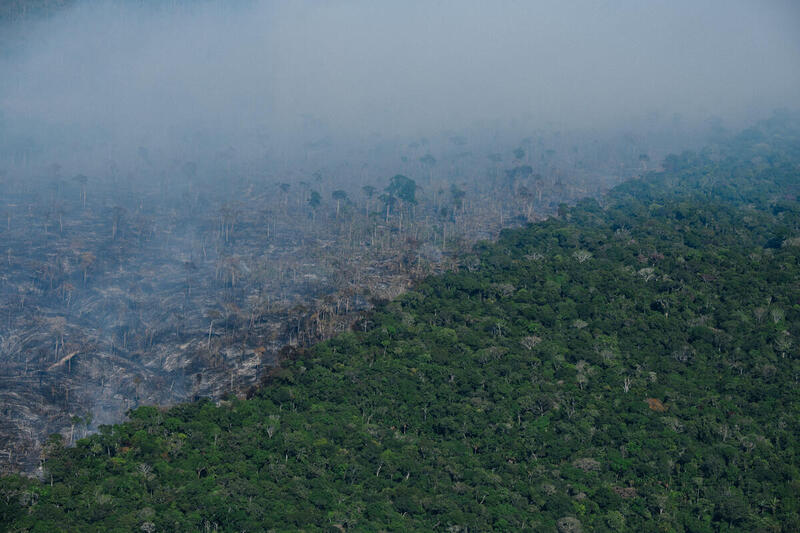Forest degradation caused by burning and logging increased nearly fivefold in September

From January to September, the area of Amazon forest felled reached 9,069 km², which corresponds to almost eight times the city of Rio de Janeiro. It was the largest devastation in 15 years, since the Amazon Institute of People and the Environment (Imazon) implemented its Deforestation Alert System (SAD, in Portughese) for the Legal Amazon in 2008.
In addition, it was the fifth consecutive time that deforestation reached the worst level in the last 15 years between January and September. During a decade, from 2008 to 2017, the accumulated deforestation in the period remained below 3,500 km².
“These high levels of destruction not only threaten biodiversity and traditional peoples and communities, but also affect the lives of the entire Brazilian population. The deforestation impacts the increase in greenhouse gas emissions, which are largely responsible for climate change and extreme events”, explains Imazon researcher Bianca Santos.
In addition to deforestation, which is the total removal of vegetation, forest degradation caused by burning and logging increased 359% in the Amazon. The area affected by this environmental damage went from 1,137 km² in September 2021 to 5,214 km² in the same month this year. That is: a growth of almost five times. Furthermore, this was the sixth consecutive month in which degradation increased.
“A large part of the degraded areas in the Amazon forest in September are related to the burnings, which offer a risk to public health. Several studies associate them with an increase in respiratory problems and not only in the Amazon population, because the smoke from the burnings can reach other regions of the country”, adds Bianca.
In September, only two states concentrated 96% of the degraded area in the Amazon: Mato Grosso, with 3,865 km² affected (74%), and Pará, with 1,127 km² (22%).
Deforestation in September reached 1,129 km²
As for deforestation, in September alone 1,126 km² of forest were destroyed in the Amazon. This was the third worst September in 15 years, only behind 2021 and 2020. And almost half of this destruction occurred in Pará: 553 km² (49%).
In the state, the destruction is advancing northward and approaching the largest block of protected areas in the world, which represents a great threat to the Amazon biodiversity and to the traditional peoples and communities of the region. Another problem in Pará is the advance of destruction within indigenous lands and conservation units.
“Six of the 10 most deforested indigenous territories in September are in Para, including Apyterewa, which led the ranking. The territory , which this year has been suffering monthly with the advance of invasions, lost last month alone an area equivalent to 1,800 soccer fields. As for the protected areas, Pará has five of the 10 most destroyed”, says Raissa Fernanda Ferreira, Imazon researcher.
View the September data here (in Portughese)
